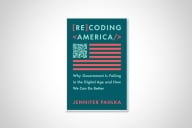You have /5 articles left.
Sign up for a free account or log in.
Several years ago, at a conference, Zakiya Smith Ellis referred to dual enrollment as “undertheorized.” That comment stuck with me; it seems to get more true every year.
I was reminded of it again over the last couple of weeks.
The most common—and rapidly growing—model of dual-enrollment classes involves high school teachers teaching college courses in the high school, to high school students. The model offers a few obvious advantages. It solves scheduling issues nicely, since high school schedules often bear little resemblance to college schedules and the high school teachers are there anyway. It also takes transportation challenges off the table because both the students and the teachers are also already there. And since high school teachers often receive instruction in ways to work with adolescents and college faculty don’t, the teachers may be better prepared to handle the challenges of working with 16-year-olds.
Legislators have grown increasingly fond of dual-enrollment programs because they offer the prospect of simultaneously offering new services and cutting spending. School districts often like dual enrollment as a draw to keep high-achieving students attending public school and, increasingly, to keep low-income students attending school at all. Colleges struggling for enrollment see dual enrollment as a way to fill out FTEs. And the data I’ve seen have generally shown that students who take college classes while in high school are likelier to attend college and likelier to complete college than demographically similar peers who don’t.
Politically, that’s a potent mix. And on the merits, there’s a lot to be said for it.
In that context, focusing on faculty credentials can be unpopular. But it matters—or it matters that it doesn’t matter.
I’m referring here particularly to traditional academic courses, particularly those that fall under a gen ed designation—English, math, history and the like. Courses in more applied technical fields—welding, cybersecurity—often don’t require graduate degrees even when taught on campus.
For traditional academic classes, we typically require at least a master’s degree in the discipline or a closely related discipline. The idea is to ensure some scholarly depth behind the instruction. It’s a proxy, of course, but the same can be said of academic degrees generally.
Most high school teachers don’t have a master’s degree or higher in the subject they teach. And even when they do, the rate of turnover among high school teachers is often high enough that an agreement predicated on the presence of a given teacher becomes obsolete before anyone at the college notices.
In the past, I’ve been relatively adamant about the degree requirement. But neither my state nor my regional accrediting agency seems particularly bothered, so holding the line becomes a competitive disadvantage when up against other schools that don’t care at all.
Which raises two questions. First, do degree requirements actually make a difference? Second, what if they don’t?
I haven’t seen good data on the first question. I asked at a dual-enrollment conference at the University of Pittsburgh last week and was told that there really isn’t good data on that at this point. Do students who take dual-enrollment classes with teachers with graduate degrees in the field succeed—either in that course or subsequently—at higher rates than students in classes with teachers without the credential? It’s an empirical question, but I haven’t seen an empirical answer. If anyone has, I’d love to know—please reach out at deandad (at) gmail (dot) com. If there’s solid data showing that the degree doesn’t matter, I’ll happily reconsider my long-standing view.
The more compelling question, in some ways, is what it means if the data shows that a graduate degree makes no difference in student success. Part of me wonders if the reason we haven’t studied that is that we don’t want to know. It’s true that a graduate degree in, say, history, isn’t usually about the teaching of history. But if it winds up making no discernible difference for students, then we may have some questions to ask about credentials on campus, too.



